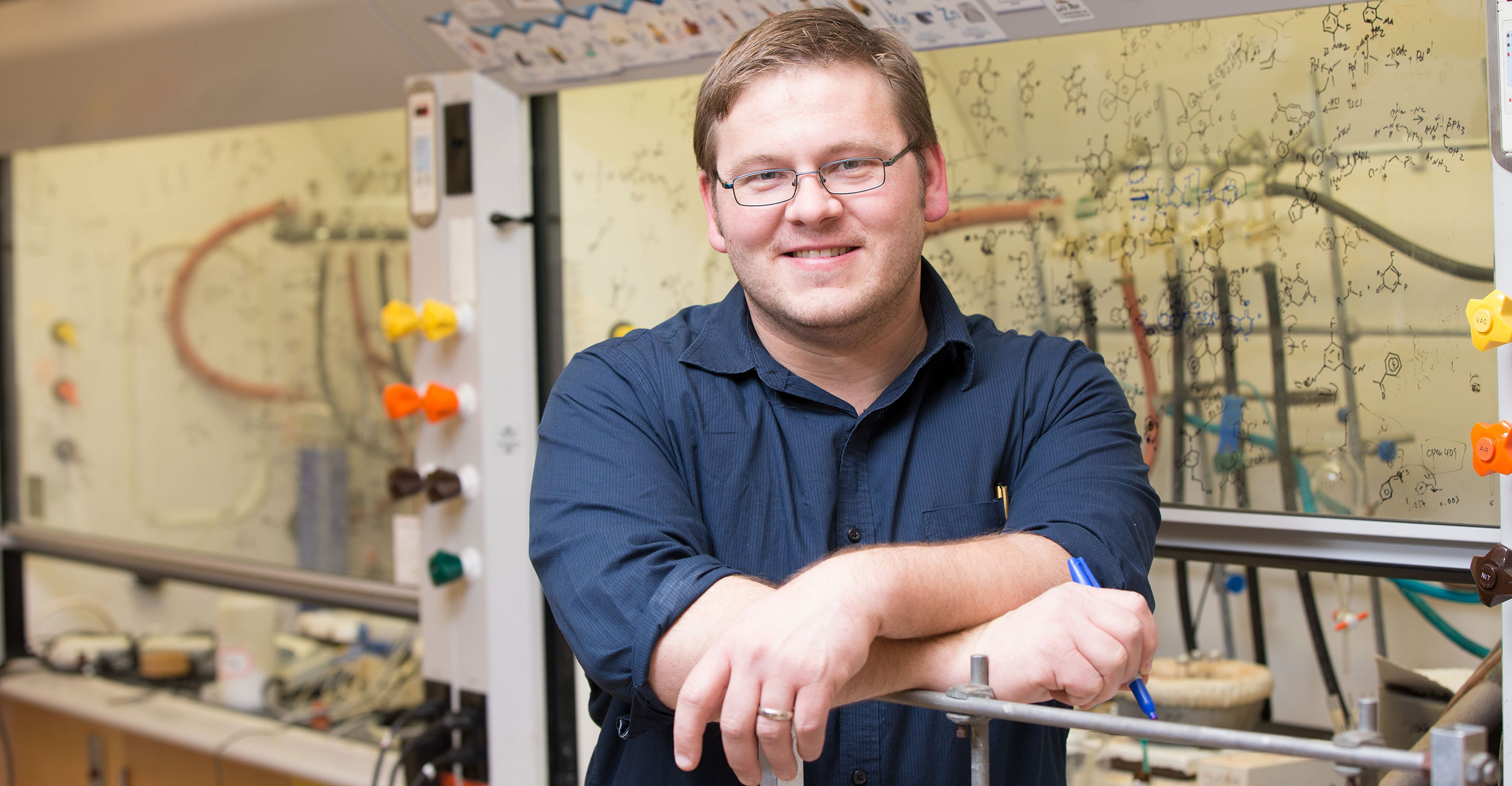
OSU chemistry professor receives $1.8 million NIH grant
Wednesday, August 18, 2021
Media Contact: Jacob Longan | Coordinator of Communications and Marketing | 405-744-7497 | jacob.longan@okstate.edu
Oklahoma State University chemistry professor Jimmie Weaver received a 5-year, $1.8 million grant from the National Institutes of Health (NIH), becoming one of only six people in Oklahoma ever to receive the award.
Weaver was notified he received one of the competitive Maximizing Investigators’ Research Awards (MIRA) from the NIH’s National Institute of General Medical Sciences in December. Weaver is the first faculty member in OSU’s Department of Chemistry to ever receive the MIRA, the second person from OSU.
“This award allows us to have a fully functioning lab that has what it needs to be successful and to develop high impact science that can shape how scientists think about the world,” Weaver said. “In keeping with the spirit of Oklahoma, we can continue to blaze new intellectual trails for other chemists to follow.”
Nick Materer, the head of the Department of Chemistry, said the department is proud of Weaver for earning the MIRA grant. He said in addition to funding, awards like the MIRA enhance the department’s reputation and help to bring in students.
Materer also said he is happy Weaver’s research group will have the funding to continue their work because it could be impactful to the area of organic chemistry.
“Science doesn’t happen only at Ivy League schools,” Materer said. “Innovative science happens because someone has the time to be involved and do something.”
Weaver’s research area is organic synthesis, and the MIRA grant will finance Weaver’s research group over the next five years. The $1.8 million will support about 3,200 hours of undergraduate research, 20 years of graduate student salaries and tuition and other costs associated with conducting research.
Erik Lantz, a master’s student and research assistant in Weaver’s lab, has been working with Weaver for three years. He said the funding Weaver receives from grants like the MIRA have a huge impact on graduate students like him because they allow students to further their education through research experience that they wouldn’t have time to do if they had to find other jobs.
“It allows us to work as research assistants instead of TAs, and as research assistants, we don't have to take part in teaching or grading or proctoring or anything like that,” Lantz said. “We can devote more time to lab work and to research. It’s a great opportunity to take charge of our own education.”
Weaver’s research team is working on two research projects in the area of organic synthesis. The first project focuses on finding a way to create artificial photosynthesis, and the second project focuses on finding more efficient methods to create organofluorines.
Weaver said his team is using natural photosynthesis as the blueprint for making synthetic photosynthesis. He likened the process to trying to find a way to make water flow uphill.
“We've shown that is feasible,” Weaver said. “We've done it to some extent. We have in the past published a number of papers showing that and teaching the world how to do things that are effectively baby steps but in the uphill direction, so to speak.
“So in this grant proposal, we want to take a large step forward in trying to really develop this idea of how to move in the uphill direction.”
The other half of Weaver’s research focuses on organofluorines. Organofluorines are organic compounds that contain a carbon-fluorine bond, and there are a variety of uses for organofluorines, including in pharmaceuticals. However, most organofluorines are not naturally occurring and are difficult to synthesize. Weaver’s group hopes to find a more efficient method to make these compounds, and their current approach seems to show progress.
Weaver said the conventional approach to creating organofluorines is similar to painting; chemists try to “paint” bonds in certain places on molecules to achieve a desired effect, but once one bond has been created, it’s hard to create other bonds. Weaver’s approach is more similar to sculpting: he creates as many carbon–fluorine bonds on a particular molecule as possible without regard for their location, and then selectively removes the carbon–fluorine bonds he doesn’t want in order to achieve the desired organofluorine.
“Simply put, we’re trying to develop creative new ways of thinking about putting molecules together that enable chemists to make more molecules than what were possible before,” Weaver said. “To go into new areas that were inaccessible before is the objective because we've really only uncovered a very small fraction of molecules that are actually synthetically accessible.”
Weaver said he is excited about the research his group is doing because he believes it will help make Oklahoma a world leader in chemical synthesis, and he is excited to have the MIRA grant to finance his research.
“We're incredibly grateful to the NIH, and I am very grateful to all my colleagues that I've worked with over the years that have made it possible,” Weaver said. “We are really excited about the directions that we’re going, and we think that the scientific community will appreciate and utilize what we're learning here.”
Story by Ellie Melero, College of Arts and Sciences Graduate Assistant
